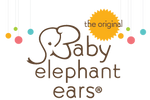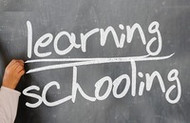How to Identify a Learning Disability in Children
28th Apr 2015
 Learning disabilities are tough challenges for
kids to deal with. Not only do they make learning difficult, but it’s tough to
explain to a child why his peers excel at things or learn new ideas faster than
him. The best way to cope with a learning disability is to identify it quickly
and speak with a counselor or educator who can offer the tools to overcome it.
Learning disabilities are tough challenges for
kids to deal with. Not only do they make learning difficult, but it’s tough to
explain to a child why his peers excel at things or learn new ideas faster than
him. The best way to cope with a learning disability is to identify it quickly
and speak with a counselor or educator who can offer the tools to overcome it.
The National Institute of Child Health and Human Development gives us this list of common signs of learning disabilities:
- Difficulty with reading and/or writing
- Problems with math skills
- Difficulty remembering
- Problems paying attention
- Trouble following directions
- Poor coordination
- Difficulty with concepts related to time
- Problems staying organized
A child with a learning disability also may exhibit one or more of the following:
- Impetuous behavior
- Inappropriate responses in school or social situations
- Difficulty staying on task (easily distracted)
- Difficulty finding the right way to say something
- Inconsistent school performance
- Immature way of speaking
- Difficulty listening well
- Problems dealing with new things in life
- Problems understanding words or concepts
Here are the four most common disabilities:
- Dyslexia – trouble making connections between letters and sounds and with spelling and recognizing words.
- Dysgraphia – problems with writing, such as being tense of awkward when holding a pen.
- Dyscalculia – trouble understanding basic math concepts such as fractions and positive/negative numbers.
- Dyspraxia – trouble with motor tasks, such as hand-eye coordination.
Keep in mind that these symptoms aren’t enough. A professional needs to officially diagnose your child with a learning disability.
Usually your child’s school has someone on staff who can put you in touch with the right people to help your child. You can also get a referral from your doctor.
Furthermore, each person’s learning disability is unique. Your child might not exhibit all the signs or exhibit an unusual sign that’s not common. For example, a young child who is learning a second language might display some of these signs in one language or both languages, even though there is no disability at play.
Always remember that learning disabilities can be overcome and adapted to; they aren’t life sentences. Many people in high-income and powerful positions have overcome learning disabilities.
 Guest Blog by Karri Bowen-Poole, Founder of Smart Playrooms
Guest Blog by Karri Bowen-Poole, Founder of Smart Playrooms
Smart Playrooms designs, builds and organizes play areas for children. They combine sound educational philosophy with unique beautiful design. Smart Playrooms will bring the most effective classroom organization techniques and learning strategies into your home or business.
Stressing that less is more, they help moms focus on the toys that will add to the experience. Karri and Chris really like the idea of using their educational backgrounds and expertise to create custom designed playrooms. Plus, this gives them a niche in the market. Former teachers designing and organizing your playroom – what could be better!
For more information, please visit smartplayrooms.com.
Interested in writing a guest blog for Baby Elephant Ears? Send your topic idea to pr@babyelephantears.com.
All data and information provided on this site is for informational purposes only. Baby Elephant Ears makes no representations as to accuracy, completeness, current-ness, suitability, or validity of any information on this site and will not be liable for any errors, omissions, or delays in this information, or any losses, injuries, or damages arising from its display or use. All information is provided on an as-is basis.

